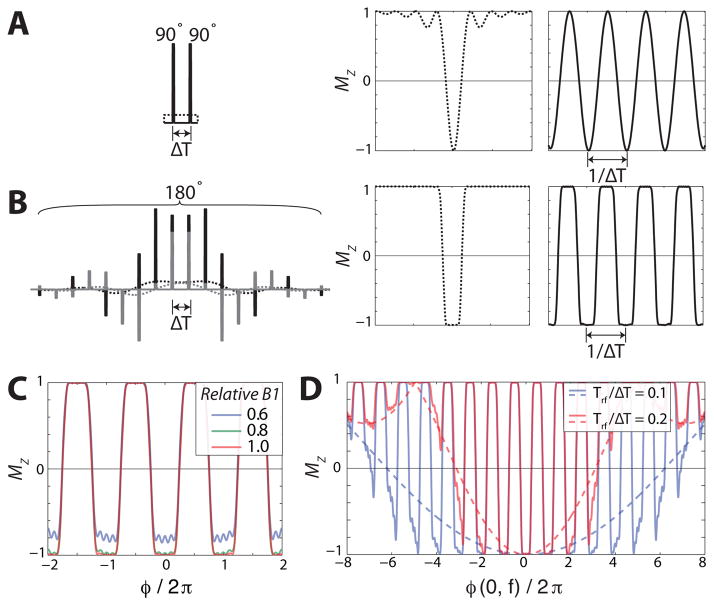Fig. 2.
Comparison of continuous pulses (dashed) and gapped pulse trains (solid lines) magnetization profiles. (A) Rectangular 180° and 90°-90° (conventional STE encoding). (B) Hyperbolic secant (sech) 180° inversion pulse and its gapped pulse train version (super-STE encoding) which creates a square-wave in MZ. The real and imaginary RF components are black and gray, respectively. (C) Sech super-STE profile, Q̂(φ(x⃗, f)), in response to B1 variations. The profile deviates noticably when there is 60% of the nominal B1 ampliude, but is practically indistinguishable from the nominal response for 80%, 120% (not shown), and 140% (not shown) amplitudes. (D) Gapped pulse train off-resonance profile for rectangular subpulses. The pulse train profile (solid lines) reflects the modulation of Q̂ (φ(x⃗, f)) by the subpulse profile (dashed lines). The profile depends on the subpulse shape and Trf/ΔT. The subpulse profile was calculated in the small-tip regime and scaled appropriately.

